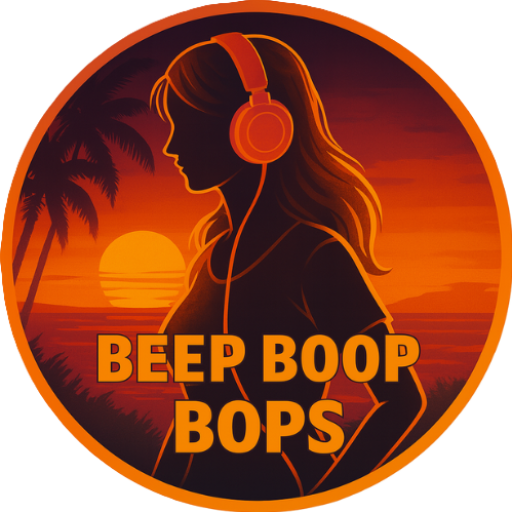In the realm of music, visuals play a crucial role in enhancing the listener’s experience. Character-based music visuals, in particular, have emerged as a powerful tool for artists to convey their messages and emotions. When you think about it, characters can serve as a bridge between the music and the audience, allowing for a deeper connection.
They embody the themes and emotions of the songs, transforming abstract feelings into relatable figures that resonate with viewers. This connection is not merely superficial; it taps into the psychological aspects of storytelling and character identification, making the music more memorable and impactful. Moreover, character-based visuals can elevate a song’s narrative by providing a visual representation of its themes.
For instance, a character might embody the struggles of love, loss, or triumph, allowing you to visualize the emotional journey that the music encapsulates. This synergy between sound and sight creates a multi-dimensional experience that can captivate audiences in ways that audio alone cannot. As you engage with these visuals, you may find yourself drawn into a world where the music comes alive, making it easier to connect with the artist’s intent and message.
Key Takeaways
- Character-based music visuals have the power to enhance the emotional impact of a song and create a memorable experience for the audience.
- When choosing characters for music visuals, it’s important to consider the theme and message of the song, as well as the target audience.
- Animation and design are key elements in bringing characters to life and conveying emotions and storytelling in music visuals.
- Incorporating storytelling into character-based music visuals can deepen the connection with the audience and create a more immersive experience.
- Character-based music visuals have the potential to create strong emotional connections with the audience, leading to increased engagement and impact.
Choosing the Right Characters for Your Music Visuals
Selecting the right characters for your music visuals is a critical step that can significantly influence how your audience perceives your work. You should consider the themes and emotions conveyed in your music when deciding on character design. For example, if your song explores themes of resilience and hope, you might choose characters that embody strength and positivity.
On the other hand, if your music delves into darker themes, such as heartbreak or despair, characters that reflect those emotions can create a more cohesive narrative. The alignment between your characters and your music is essential for creating a seamless experience for your audience. Additionally, think about the diversity and relatability of your characters.
In today’s world, audiences appreciate representation and inclusivity. By incorporating characters from various backgrounds, cultures, and experiences, you can broaden your appeal and make your visuals resonate with a wider audience. This approach not only enriches your storytelling but also fosters a sense of connection among listeners who may see themselves reflected in your characters.
Ultimately, the right characters can enhance the emotional depth of your music visuals and create a lasting impression on your audience.
Bringing Characters to Life through Animation and Design

Once you’ve chosen your characters, the next step is to bring them to life through animation and design. This process involves not only visual aesthetics but also the character’s movements and expressions. You want to ensure that your characters are animated in a way that reflects their personalities and emotions.
For instance, a character representing joy might be animated with lively movements and bright colors, while a character embodying sadness may have slower, more subdued motions. The animation style you choose can significantly impact how your audience perceives the character’s emotions and intentions. In addition to animation, consider the overall design elements that will enhance your characters’ appeal.
Color palettes, textures, and backgrounds all contribute to the atmosphere of your visuals. A well-thought-out design can evoke specific feelings and set the tone for your music. For example, using warm colors can create a sense of comfort and happiness, while cooler tones might evoke feelings of melancholy or introspection.
By paying attention to these details, you can create a visually stunning experience that complements your music and draws viewers into the world you’ve created.
Incorporating Storytelling into Character-Based Music Visuals
Storytelling is at the heart of character-based music visuals. As you develop your visuals, think about how you can weave a narrative that complements your song’s themes. A compelling story can engage viewers on a deeper level, allowing them to connect emotionally with both the characters and the music.
You might consider creating a storyline that follows a character’s journey—whether it’s overcoming obstacles or experiencing personal growth—mirroring the song’s progression. This narrative arc can provide context for the emotions expressed in the music, making it more relatable and impactful. Furthermore, consider how you can use visual storytelling techniques to enhance your narrative.
Techniques such as foreshadowing, symbolism, and character development can add layers of meaning to your visuals. For instance, you might introduce an object or motif early in the story that gains significance as the narrative unfolds. This approach not only keeps viewers engaged but also encourages them to reflect on the deeper meanings behind both the visuals and the music.
By integrating storytelling into your character-based visuals, you create an immersive experience that resonates long after the music has ended.
Creating Emotional Connections with Character-Based Music Visuals
Emotional connections are vital in any artistic endeavor, especially in music. Character-based visuals have a unique ability to evoke emotions by allowing viewers to empathize with the characters’ experiences. When you create characters that are relatable and authentic, you invite your audience to invest emotionally in their journeys.
This connection can be further enhanced through visual cues such as facial expressions, body language, and even color choices. For example, a character’s tearful expression during a poignant moment in the song can evoke feelings of sadness or empathy in viewers. Additionally, consider how sound design can complement your visuals to amplify emotional impact.
The right sound effects or musical cues can heighten tension or joy at pivotal moments in your story. By synchronizing audio elements with visual storytelling, you create a holistic experience that resonates on multiple levels. This synergy not only deepens emotional connections but also reinforces the overall message of your music.
When viewers feel emotionally invested in your characters and their stories, they are more likely to engage with your music on a personal level.
The Impact of Character-Based Music Visuals on Audience Engagement

The impact of character-based music visuals on audience engagement cannot be overstated. In an age where attention spans are shorter than ever, captivating visuals can draw viewers in and keep them engaged with your music longer. When you combine compelling characters with dynamic animation and storytelling, you create an experience that encourages audiences to return for more.
This engagement is not just about passive viewing; it invites active participation as audiences become emotionally involved in the narrative. Moreover, character-based visuals can foster community among fans. When viewers connect with characters and their stories, they often share their experiences with others—whether through social media discussions or fan art inspired by your work.
This sense of community can amplify your reach as fans become advocates for your music and visuals. By creating character-driven content that resonates with audiences, you not only enhance their engagement but also cultivate a loyal fan base that feels personally connected to your artistic vision. In conclusion, character-based music visuals hold immense power in shaping how audiences experience music.
By carefully selecting characters that align with your themes, bringing them to life through thoughtful design and animation, incorporating storytelling elements, fostering emotional connections, and enhancing audience engagement, you can create an unforgettable experience that resonates deeply with listeners. As you embark on this creative journey, remember that the synergy between music and visuals has the potential to elevate your artistry to new heights—inviting audiences into a world where sound and sight harmoniously intertwine.



